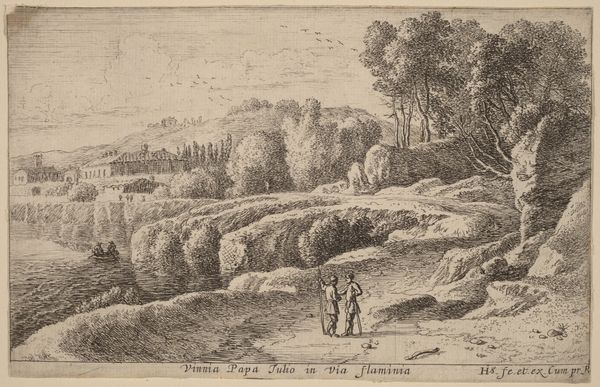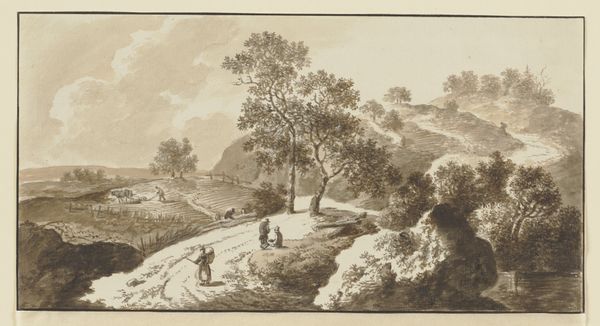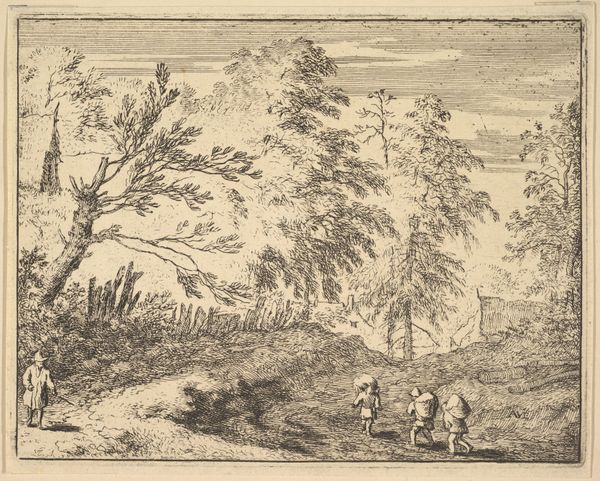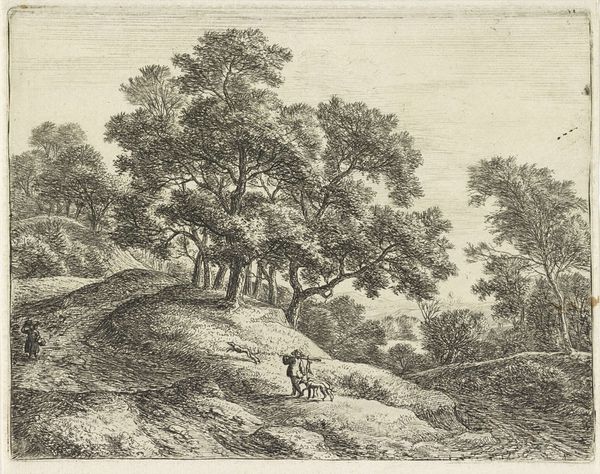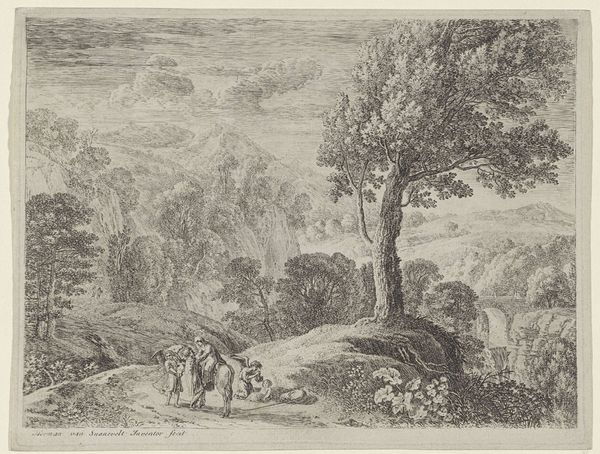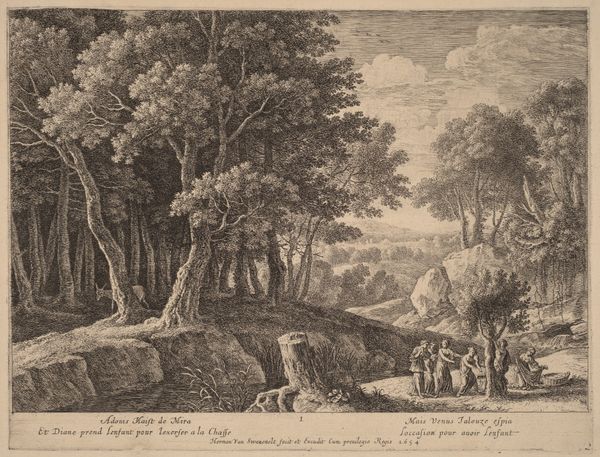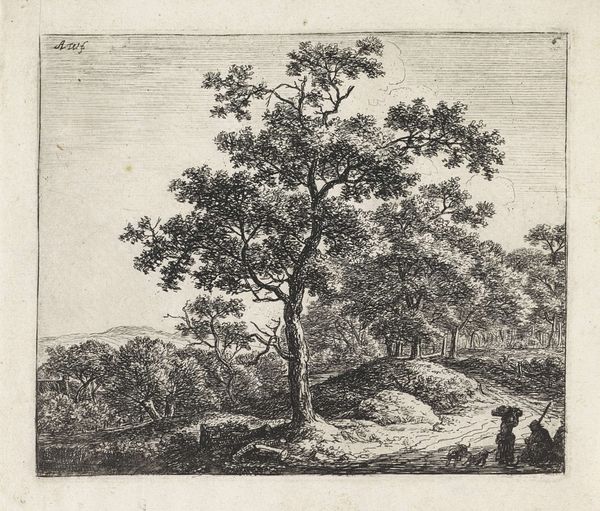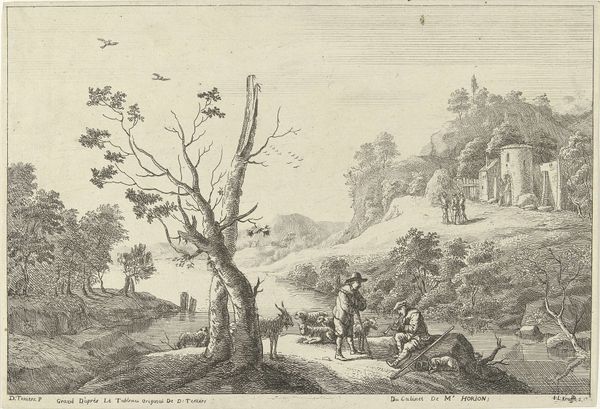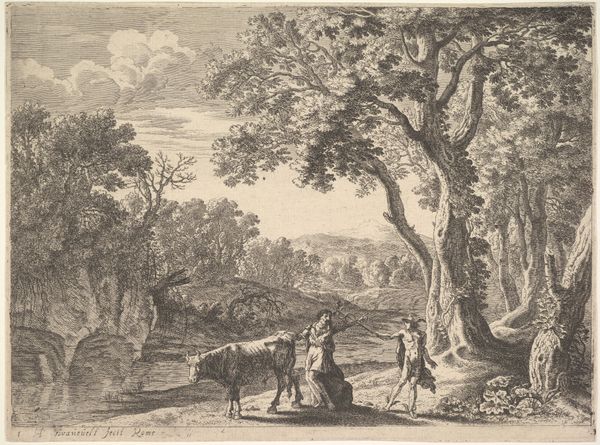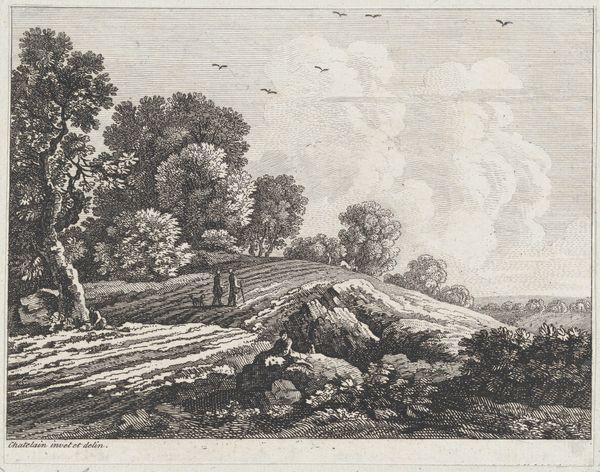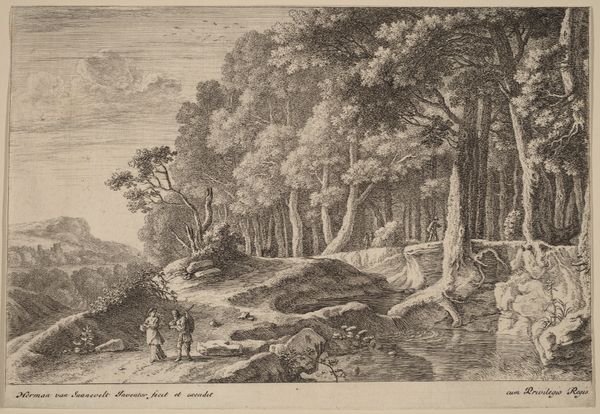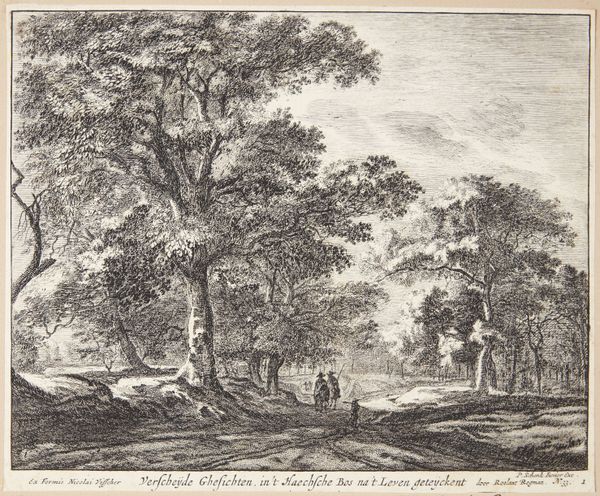
#
pencil drawn
#
amateur sketch
#
light pencil work
# print
#
pen sketch
#
pencil sketch
#
pencil drawing
#
pen-ink sketch
#
pen work
#
pencil work
#
watercolor
Copyright: National Gallery of Art: CC0 1.0
Curator: Before us is "First View of Zugro", a print work possibly by Herman van Swanevelt. Its hazy landscape feels somewhat pastoral, wouldn't you agree? Editor: Initially, I am struck by how much open space exists within the work, almost mimicking a vast, accessible theater in its staging, contrasting starkly with its medium and presumably small scale. There's an unexpected tension there. Curator: True. The composition directs your eye through winding paths. The trees aren’t merely backdrop; they create a frame, guiding our observation. Such picturesque landscapes served an important function in shaping and aestheticizing European encounters with nature during that period. Editor: And those encounters were far from neutral. The way this image encourages a detached, possessive gaze needs interrogation. How does its vision serve—or perhaps, subtly promote—dominant cultural attitudes of the era? I am interested to see how those tiny figures occupying the landscapes engage in these settings. Are they owners or travelers? What do they do? Curator: These prints facilitated the spread of idealized versions of nature. Note, in particular, the small group ahead. How the path ahead leads straight to their small bodies is something important to explore. The "picturesque" was about power; a controlled, curated experience. Editor: Exactly! And what about the social context of viewing this work? Was it primarily consumed by landowners and their families and by travelers? To what extent did access play a role in shaping this landscape’s representation? How are these narratives still echoed in tourism, conservation, and ideas of public space today? Curator: Considering those systems is absolutely vital. Analyzing this landscape painting only in terms of its aesthetics feels inadequate, without consideration for these many other social, historical forces and cultural norms. Editor: I think acknowledging how we inherit and continue to perpetuate or shift these power dynamics lets us truly engage with the complexities in artworks like this and reimagine new stories and relations with the environment around us. Curator: Precisely! It invites more accountable and inclusive futures. Editor: Indeed, seeing "First View of Zugro" invites viewers to consider not just what is represented, but also why, by whom, and with what consequences, ultimately inspiring collective action toward an ethically equitable future.
Comments
No comments
Be the first to comment and join the conversation on the ultimate creative platform.

